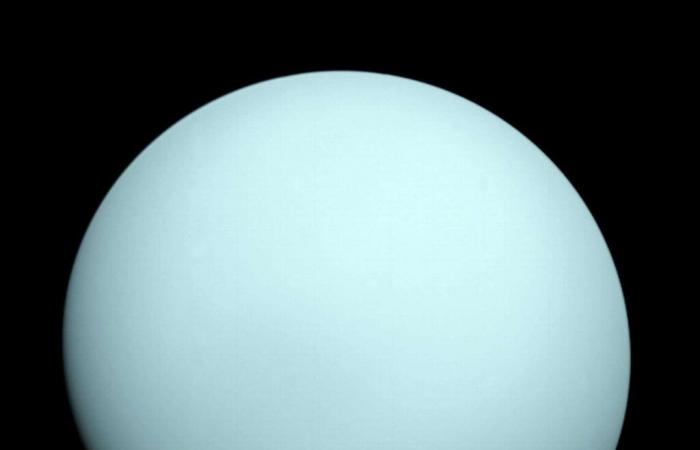The Voyager 2 probe was launched in 1977. It is now sailing in the interstellar medium, some 21 billion kilometers from Earth and must save its energy to continue its journey. But in 1986, she made a hoverhover noticedUranusUranus. An overview during which the astronomersastronomers observed phenomena in the magnetosphere of the gas planet that completely disconcerted them. Enough to reinforce the reputation that Uranus had already made by rotating around an almost horizontal axis. That of an exceptional planet in our Solar System.
Uranus would have tilted due to a giant collision
What the probe Voyager 2Voyager 2 revealed, it is a completely off-center and unbalanced magnetosphere. Like no other in our Solar System, revealing belts of surprisingly intense electronic radiation. Belts without a source of energized particles to power them.
Data disrupted by exceptional space weather
Voyager 2 data also shows a magnetosphere almost devoid of plasma, even though the moons of Uranus should power it. This is what the icy moons of the other giant planets in our Solar System do. The only slightly disappointing explanation in sight: the moons of Uranus must be dead.
But researchers have reanalyzed the data sent back by Voyager 2 38 years ago. And they now believe that these observations are nothing more and nothing less than the fruit of a kind of cosmic coincidence. In the magazine Nature Astronomythey say that, a few days before the Voyager 2 flyby, an increase by a factor of 20 in the pressionpression dynamics of solar windsolar wind was recorded. And they conclude that the gas planetgas planet was hit, at that time, by an unusual type of weather reportweather report spatial. “This new work explains some of the apparent contradictions and will once again change our view of Uranus”notes Linda Spilker, astronomer at Jet Propulsion LaboratoryJet Propulsion Laboratoryin a NASA press release. She was one of those who waited for the images, behind their screens, in 1986.
What implications for Uranus and its moons?
What tipped the researchers off was what they recorded with the mission MessengerMessenger and its thousands oforbitsorbits around MercureMercure. A host of classic data and some rare ones during which the activity of our SoleilSoleil completely eroded the magnetic fieldmagnetic field of the planet. For Uranus, the researchers explain that when the plasma carried by the solar wind struck the giant planet in 1986 – as it only happens less than 5% of the time – it compressed its magnetosphere. At only 20% of its volumevolume! Ejecting its plasma. And also briefly intensifying the dynamics of the gas planet’s magnetosphere. Enough to also power the belts observed by Voyager 2 by injecting them electronselectrons.
Everything indicates that 4 moons of Uranus contain water!
If ongoing missions to take a close look confirm these results, astronomers could be led to review the image they have of the interior of Uranus. They could also review the way they approach the giant planet’s five major moons. Data from Voyager 2 suggested that they were geologically inert. But they could ultimately be active and harbor oceans that we could manage to detect under the ice layer. From there to hoping to find traces of extraterrestrial life… there still remains a milestone that astronomers are not yet quite ready to cross.






